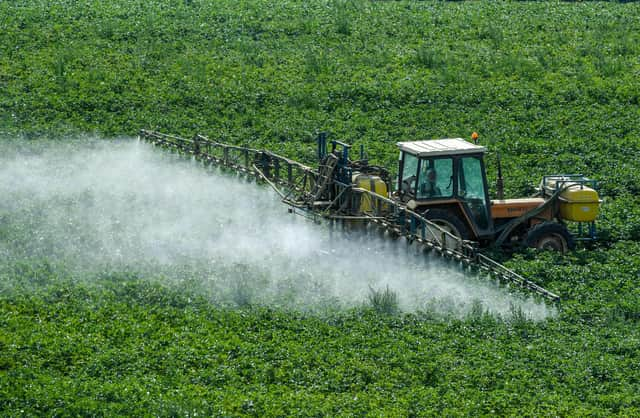Farming: Pilot scheme to reduce fungicide


The project, being backed by the Agricultural and Horticultural Development Board (AHDB) on a commercial unit in Fife aims to reduce fungicide usage by maximising crop resilience:
“Our goal is to apply the right nutrients this season to improve crop health so it can withstand any disease,” said host farm manager, David Aglen.
Advertisement
Hide AdAdvertisement
Hide Ad“We are looking at whether or not plant health can be improved through a tailored nutrition programme, and hopefully reduce, or do away with completely, the need for fungicides.”
He said that throughout the growing season a refractometer would be used to take Brix meter readings every week at the same time of day, in similar locations in the same field:
“A drop in the Brix measurement is being used as an indication of a drop in plant health,” said Aglen.
Brix is already used in the livestock sector to assess colostrum quality and in the horticulture sector to look at sugars in plants, providing a quick and simple indication of possible crop stress.
If the Brix reading falls below a particular threshold, a bulk tissue sample will be sent off for analysis, with the results becoming available within a couple of days.
Aglen said that a decision would then be taken as to which micronutrients or macronutrients should be added to correct any nutrient deficiencies that had been identified in the crop.
A message from the Editor
Thank you for reading this article. We're more reliant on your support than ever as the shift in consumer habits brought about by coronavirus impacts our advertisers.
If you haven't already, please consider supporting our trusted, fact-checked journalism by taking out a digital subscription.
Comments
Want to join the conversation? Please or to comment on this article.
